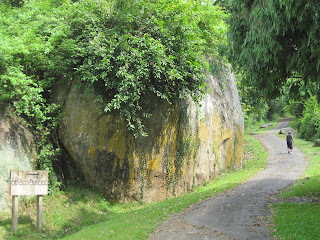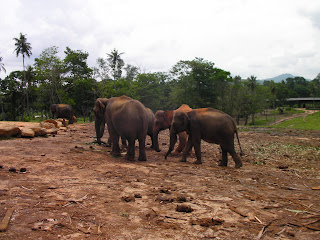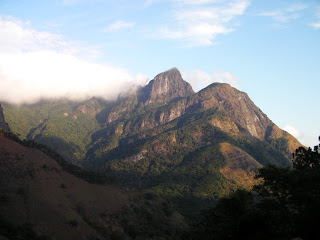The Avukana statue is a standing statue of the Buddha at the Avukana Ancient Rock Temple, near Kekirawa in North Central Sri Lanka. Constructed during the reign of King Dhatusena during the 5th century. The statue, which has a height of more than 40 feet (12 m), has been carved out of a large granite rock face but is not completely separated. A narrow strip of rock has been left at the back of the statue, connecting it to the rock face and supporting it. However, the pedestal on which the Buddha stands, which is carved in the form of a lotus flower, has been carved separately and positioned under the statue. It depicts a variation of the Abhaya mudra, and the closely worn robe is elaborately carved. The statue had been located within a large image house or shrine, of which parts of the walls still remain. It had been made of brick and stone, and was 74 feet (23 m) long and 63 feet (19 m) wide.
Route to Avukana Ancient Rock Temple :
There is another standing statue of the Buddha, quite similar to the Avukana statue, at Sasseruwa located close to Avukana. According to legend, the two statues are the result of a competition between a stone sculpting guru (master) and gola (pupil). The story goes that the master constructed the Avukana statue, while the pupil made the statue at Sasseruwa. The first to complete his statue had to notify it to the other by ringing a bell. The master managed to complete his statue first, and won the competition. This is said to be the reason that the Sasseruwa statue is in an unfinished state which has height about 13 meter(39 feets and 3 inches).
The statue depicts the Abhaya Mudra ( freedom from fear). Like the Awkana the robe of the Buddha is clinging to the body but the final finishes doesn't seems to have been done.
The pedestal on which the Buddha is carved is not decorated and it is only a square block of stone. One ear is also unfinished. This statue also lacks the "Siraspatha" at the top of the head which is seen in the Awkana statue. But it is said that there has been a wooden "siraspatha" in early days.
Route to Ras Wehera from Avukana :
The Bo Tree in this temple is a sapling of the very first 32 saplings (dethis Omaha bo Ankara) of the Sri Maha Bodhi in the Anuradhapura and is thought to be planted by the king Devampiyathissa (250 - 210 BC). It is said that on the day the tree was planted the area was lit by colourful rays of light (ras). Thus the name 'Ras Vehera' was attached to this site. The tree is protected by a 10 feet tall 4 layers of tightly packed stones. This is too is a unique feature of the unique feature comparable to bodigara seen in other temples.
Next time visit not only Avukana Rock Temple but also the Ras Wehera...




















































